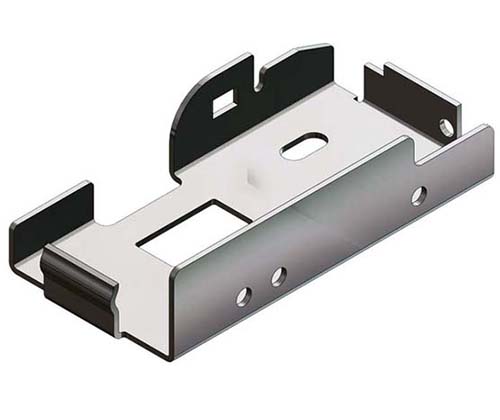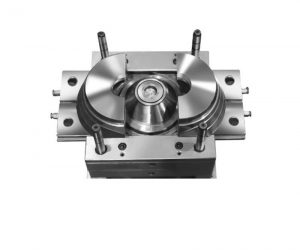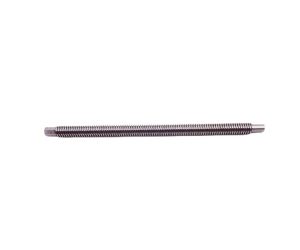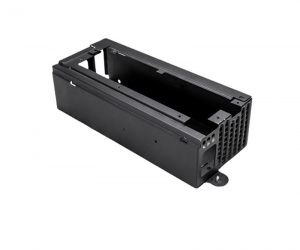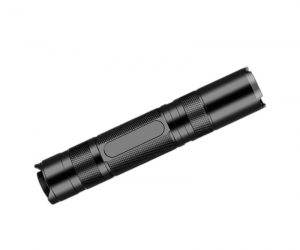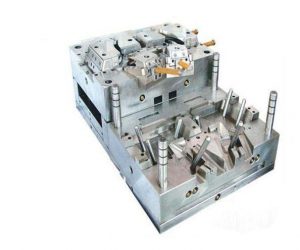The Basics of Sheet Metal
What is Sheet Metal
Sheet metal is a thin, flat piece of metal that is widely used in various industries due to its versatility and formability. It is typically produced by rolling large slabs of metal into thin sheets, which can then be cut, bent, and shaped into a variety of products. Sheet metal can be made from a range of metals, including steel, aluminum, copper, brass, and titanium, each with its own unique properties and characteristics.
One of the key advantages of sheet metal is its malleability, which allows it to be easily formed into complex shapes and designs. This makes it an ideal material for manufacturing parts and components that require precise dimensions and tolerances. Sheet metal can also be easily welded, brazed, or soldered, making it possible to join multiple pieces together to create larger structures.
In addition to its formability, sheet metal also offers a range of other benefits, including high strength-to-weight ratio, corrosion resistance, and electrical conductivity. These properties make it a popular choice for applications in the automotive, aerospace, electronics, and construction industries, among others.
Common Types of Sheet Metal
There are several common types of sheet metal, each with its own unique properties and applications. Here are some of the most widely used types:
| Metal Type | Characteristics | Common Applications |
| Steel Sheet Metal | High strength, good ductility, relatively low cost, magnetic properties | Automotive bodies, structural components, machinery parts, appliances |
| Aluminum Sheet Metal | Lightweight, high corrosion resistance, good thermal and electrical conductivity, non - magnetic | Aerospace components, automotive parts (especially for weight - reduction), electronics enclosures, building facades, heat sinks |
| Copper Sheet Metal | Excellent electrical and thermal conductivity, high corrosion resistance, soft and malleable, antimicrobial properties | Electrical wiring, plumbing fixtures, heat exchangers, decorative items, musical instruments |
| Brass Sheet Metal | Good corrosion resistance, attractive gold - like appearance, relatively soft and easy to machine, acoustic properties | Musical instruments, decorative hardware, plumbing fittings, electrical connectors |
| Stainless Steel Sheet Metal | Exceptional corrosion resistance, high strength, heat resistance, hygienic properties | Kitchen equipment, medical devices, chemical processing equipment, architectural applications, food processing machinery |
Steel sheet metal is one of the most commonly used types, known for its high strength and durability. It is often used in the automotive and construction industries, as well as in the manufacturing of appliances and machinery. Aluminum sheet metal, on the other hand, is lightweight and corrosion-resistant, making it a popular choice for aerospace and automotive applications, as well as for outdoor furniture and decorative items.
Copper sheet metal is highly conductive and corrosion-resistant, making it ideal for electrical and plumbing applications. It is also commonly used in the production of musical instruments and decorative items. Brass sheet metal, which is an alloy of copper and zinc, is known for its attractive golden color and is often used in the manufacture of decorative hardware, musical instruments, and plumbing fixtures.
Stainless steel sheet metal is highly resistant to corrosion and staining, making it a popular choice for applications where hygiene and durability are important, such as in the food and beverage, medical, and marine industries. It is also commonly used in architectural applications, such as in the construction of buildings and bridges.
The Skills of Sheet Metal Specialists
Technical Proficiency
Sheet metal specialists possess a diverse set of technical skills that are essential for working with this versatile material. These skills enable them to transform flat sheets of metal into precisely crafted components and products.
One of the fundamental skills is cutting. Specialists are proficient in using various cutting methods, such as shearing, laser cutting, water jet cutting, and plasma cutting. For Yigu Technology example, in the automotive industry, laser cutting is often used to cut intricate shapes in steel sheet metal for car body panels. The high precision of laser cutting ensures that the parts fit together perfectly during the assembly process, reducing the need for additional finishing work. Shearing, on the other hand, is a cost - effective method for making straight cuts in large sheets of metal, commonly used in the production of simple structural components.
Bending is another crucial skill. Specialists can accurately bend sheet metal to the desired angles and radii using press brakes or other bending equipment. In the construction of HVAC ducts, sheet metal is bent into specific shapes to ensure proper air flow. The ability to control the bending process precisely is vital, as incorrect bends can lead to leaks or inefficient operation of the duct system. For instance, a slight deviation in the bend angle of a duct can reduce the overall efficiency of the heating or cooling system in a building.
Welding is also a core skill for sheet metal specialists. They are trained in different welding techniques, including MIG (Metal Inert Gas) welding, TIG (Tungsten Inert Gas) welding, and spot welding. In the manufacturing of metal enclosures for electronics, TIG welding is often preferred because it produces a clean and precise weld, which is important for maintaining the integrity and appearance of the enclosure. Spot welding is commonly used in the automotive industry to join multiple sheet metal parts together, providing a strong and efficient bond.
Knowledge of Materials
A deep understanding of different sheet metal materials and their properties is essential for sheet metal specialists. Each type of metal has unique characteristics that influence its performance and suitability for specific applications.
Steel sheet metal, for Yigu Technology example, comes in various grades, such as mild steel, high - strength steel, and stainless steel. Mild steel is relatively inexpensive and has good formability, making it suitable for a wide range of applications, from general - purpose brackets to automotive body parts. However, it has lower corrosion resistance compared to stainless steel. High - strength steel, as the name implies, offers greater strength, which is crucial in applications where the component needs to withstand heavy loads, like in the construction of bridges or large machinery. Stainless steel, with its excellent corrosion resistance, is ideal for applications in harsh environments, such as in the food and beverage industry, where hygiene and resistance to moisture and chemicals are essential.
Aluminum sheet metal is highly valued for its lightweight nature, which is a significant advantage in the aerospace and automotive industries. For aircraft components, reducing weight is crucial for improving fuel efficiency and performance. Aluminum also has good thermal and electrical conductivity, making it suitable for heat sinks in electronic devices. However, it has a lower strength - to - weight ratio compared to some steels, so its use needs to be carefully considered based on the specific requirements of the application.
Copper sheet metal is known for its outstanding electrical and thermal conductivity. It is commonly used in electrical wiring, as well as in heat exchangers where efficient heat transfer is required. Copper also has antimicrobial properties, which make it useful in applications such as in healthcare facilities to prevent the growth of bacteria. Brass, an alloy of copper and zinc, has a unique combination of properties. It has good corrosion resistance, an attractive appearance, and is relatively easy to machine, making it a popular choice for decorative hardware and musical instruments.
When choosing a sheet metal material for a project, specialists consider factors such as the required strength, durability, corrosion resistance, weight, and cost. For a project that requires a lightweight and corrosion - resistant component for outdoor use, aluminum might be the best choice. But if the component needs to conduct electricity efficiently and have some level of formability, copper could be more suitable. A thorough understanding of these material properties allows sheet metal specialists to make informed decisions and create high - quality products that meet the specific needs of their clients.
The Process of Achieving Precision Craftsmanship
Design and Planning
The journey to precision craftsmanship in sheet metal begins with meticulous design and planning. This initial stage is the foundation upon which the entire project is built, and its importance cannot be overstated.
When starting a new sheet metal project, the first step is to translate the client's requirements and ideas into a detailed design. This involves creating precise 2D and 3D drawings that accurately represent the final product. For Yigu Technology example, in the design of a custom - made electronic enclosure, every dimension, curve, and hole location must be specified with utmost accuracy. A minor error in the design can lead to significant problems during the manufacturing process, such as parts not fitting together properly or not meeting the functional requirements.
In addition to the geometric design, 工艺规划 process planning is also a crucial part of this stage. Specialists need to determine the most suitable manufacturing processes for each part of the project. This includes deciding on the type of cutting method (e.g., laser cutting for intricate shapes, shearing for straight cuts), the bending sequence to achieve the desired form, and the appropriate welding techniques for joining different components. Cost estimation is also carried out during this phase. By considering factors such as material costs, labor hours, and equipment usage, specialists can provide the client with an accurate budget for the project.
Let's take the example of a large - scale industrial equipment housing made of sheet metal. The design team spent weeks collaborating with the client to understand the specific requirements, such as the need for easy access panels, ventilation holes, and compatibility with other equipment. Through detailed 3D modeling, they were able to identify potential design flaws early on and make adjustments. The process planning involved choosing water jet cutting for thick sheet metal parts to ensure clean cuts without heat - affected zones, and using robotic MIG welding for high - volume production to improve efficiency and consistency. As a result, the final product not only met the client's expectations in terms of functionality and appearance but also achieved cost - effectiveness through optimized design and process selection.
Manufacturing Execution
Once the design and planning are complete, the focus shifts to the manufacturing execution stage, where the sheet metal is transformed from raw material into a finished product. This stage requires a high level of skill, precision, and attention to detail.
The manufacturing process typically starts with cutting the sheet metal to the required size and shape. As mentioned before, there are several cutting methods available, each with its own advantages and applications. Laser cutting, for instance, offers extremely high precision, with a cutting tolerance of up to ±0.05mm in some cases. This makes it ideal for producing parts with complex geometries, such as those found in the aerospace industry. After cutting, the sheet metal pieces are then formed into the desired shapes through bending or other forming processes. Press brakes are commonly used for bending, and the operators must carefully control the bending force, angle, and radius to ensure accurate results.
Welding is another critical step in the manufacturing process, especially when multiple sheet metal parts need to be joined together. Different welding techniques are employed depending on the type of metal, the thickness of the sheets, and the quality requirements of the final product. TIG welding, known for its high - quality and precise welds, is often used for applications where aesthetics and strength are important, such as in the production of high - end stainless - steel furniture. After welding, the product may undergo surface treatment processes, such as painting, powder coating, or electroplating. These treatments not only enhance the appearance of the product but also provide protection against corrosion and wear.
Consider a project for manufacturing automotive body panels. The sheet metal, usually high - strength steel, is first cut into large blanks using a combination of shearing and laser cutting. These blanks are then fed into a series of presses where they are formed into the complex shapes of the body panels. Robotic welding is used to join the panels together, ensuring consistent weld quality and high production speed. Finally, the assembled body panels are sent for painting, where a multi - layer paint system is applied to provide both a beautiful finish and long - term corrosion protection. Each step in this process is carefully monitored and controlled to ensure that the final product meets the strict quality standards of the automotive industry.
Quality Control
Quality control is an integral part of the sheet metal manufacturing process, ensuring that the final products meet the highest standards of quality and reliability. It is not just a final inspection but a continuous process that starts from the design phase and continues throughout manufacturing.
One of the primary methods of quality control is 尺寸检测 dimension inspection. Specialists use a variety of measuring tools, such as calipers, micrometers, and coordinate measuring machines (CMMs), to verify that the dimensions of the manufactured parts match the design specifications. For Yigu Technology example, in the production of sheet metal parts for medical equipment, the tolerances can be as tight as ±0.01mm. CMMs are capable of measuring complex geometries with high accuracy, allowing for precise verification of the part's dimensions.
visual inspection is also crucial. This involves carefully examining the surface of the sheet metal parts for any defects, such as scratches, dents, or uneven finishes. In some cases, magnifying glasses or other optical inspection tools are used to detect minor imperfections. For products where appearance is a key factor, such as consumer electronics enclosures, visual inspection is especially important to ensure a high - quality finish.
performance testing is another important aspect of quality control. Depending on the application of the sheet metal product, different performance tests may be conducted. For example, if the product is used in a high - stress environment, such as an aircraft component, it may undergo fatigue testing to ensure that it can withstand repeated loading without failure. Products used in electrical applications may be tested for electrical conductivity and insulation properties.
A sheet metal manufacturing company that produces components for the telecommunications industry has a comprehensive quality control system. Every batch of incoming sheet metal is inspected for material quality and thickness variations. During the manufacturing process, in - line inspections are carried out at key stages, such as after cutting, bending, and welding. Final products are subjected to a series of rigorous tests, including dimensional checks, visual inspections, and electromagnetic compatibility (EMC) tests to ensure they meet the industry standards and the specific requirements of the telecommunications equipment manufacturers. This strict quality control process has helped the company build a reputation for reliability and high - quality products in the market.
Case Studies: Real - World Examples of Precision Craftsmanship
Automotive Industry Case
In the automotive industry, the role of sheet metal specialists in achieving precision craftsmanship is highly evident. Take, for example, the production of car body panels. These panels need to be not only aesthetically pleasing but also highly functional in terms of safety and aerodynamics.
Sheet metal specialists start with high - strength steel or lightweight aluminum sheets, depending on the vehicle's design requirements. Using advanced laser cutting technology, they can cut the sheet metal with extreme precision. For instance, when creating the complex curves of a luxury car's fender, the laser cutting process ensures that the edges are smooth and the dimensions are accurate within a tolerance of ±0.1mm. This precision is crucial as it allows for a perfect fit during the assembly process.
After cutting, the sheet metal is bent into shape using computer - controlled press brakes. These machines can apply precise amounts of force to bend the metal at the exact angles required. In a recent project for a new model of a sports car, the sheet metal specialists were tasked with creating a unique body shape that would enhance the car's aerodynamic performance. By carefully controlling the bending process, they were able to achieve the desired shape, which reduced the car's drag coefficient by 10% compared to the previous model.
Welding is another critical step in the production of car body panels. Specialists use advanced MIG and laser welding techniques to join the different parts of the sheet metal together. Laser welding, in particular, offers a high - quality and precise weld, which is important for maintaining the structural integrity of the car body. In a study conducted by a leading automotive manufacturer, it was found that cars with laser - welded body panels had a 20% increase in torsional rigidity compared to those with traditional MIG - welded panels. This increase in rigidity not only improves the car's handling but also enhances its safety in the event of a collision.
Customer feedback for cars produced with such precision craftsmanship has been overwhelmingly positive. Owners have reported better handling, reduced noise levels, and improved overall quality. In a customer satisfaction survey, over 90% of the owners of cars with precision - crafted sheet metal body panels stated that they would consider purchasing another vehicle from the same manufacturer.
FAQ
Q1: What are the most common mistakes to avoid when working with sheet metal?
When working with sheet metal, several common mistakes can lead to sub - optimal results. One of the most prevalent errors is inaccurate cutting. This can occur due to miscalibrated cutting equipment or human error in measuring and setting the cutting dimensions. For example, a deviation in cutting dimensions by as little as 0.5mm can cause parts to not fit together properly during assembly. To avoid this, it's crucial to regularly calibrate cutting tools and double - check all measurements before cutting.
Welding defects are another common issue. Problems such as incomplete penetration, porosity, and incorrect weld bead shape can weaken the structural integrity of the welded joints. Incomplete penetration, where the weld does not fully penetrate the thickness of the sheet metal, can reduce the joint's strength by up to 50%. To prevent welding defects, proper training in welding techniques is essential. Welders should also ensure that the welding equipment is in good working condition and that the appropriate welding parameters, such as current, voltage, and wire feed speed, are set correctly.
Improper bending is also a mistake to be avoided. Bending the sheet metal at the wrong angle or with an incorrect radius can lead to parts that do not meet the design requirements. For instance, in the production of a precision - engineered bracket, an incorrect bend angle can prevent the bracket from functioning as intended. To avoid improper bending, it's important to use well - maintained bending equipment and to follow the correct bending sequence as specified in the design plan.
Q2: How can I choose the right sheet metal for my project?
Choosing the right sheet metal for your project involves considering several factors. First and foremost, you need to assess the requirements of your project. If you're working on an aerospace application, for example, you'll likely need a lightweight yet high - strength material, such as aluminum alloy. Aluminum has a density of about 2.7 g/cm³, which is much lower than that of steel (around 7.85 g/cm³), making it ideal for applications where weight reduction is crucial.
Your budget is also a significant consideration. Steel sheet metal is generally more cost - effective compared to some of the other metals, especially in large - scale production. Mild steel sheets can be purchased at a relatively low price per square meter, making them a popular choice for general - purpose applications. However, if your project requires specific properties like high corrosion resistance, you may need to invest in more expensive materials such as stainless steel or copper.
Understanding the material properties is essential. Different metals have different characteristics. Copper, for example, has excellent electrical conductivity, with a conductivity value of around 59.6×10⁶ S/m. This makes it an ideal choice for electrical wiring and components. On the other hand, if your project is exposed to harsh environmental conditions, stainless steel, with its high resistance to corrosion, would be a better option. There are different grades of stainless steel, each with varying levels of corrosion resistance, so you need to choose the one that best suits your specific environmental conditions.
Q3: What is the typical cost range for sheet metal fabrication services?
The cost of sheet metal fabrication services can vary widely based on several factors. Material cost is a major determinant. For example, aluminum sheet metal is generally more expensive than mild steel. As of [current date], the price of mild steel sheet metal might range from \(200 - \)500 per ton, while aluminum sheet metal could cost \(1500 - \)3000 per ton, depending on the grade and thickness.
The complexity of the fabrication process also impacts the cost. Projects that require intricate cutting, multiple bending operations, or high - precision welding will be more expensive. A simple rectangular sheet metal enclosure with basic bending and welding might cost \(50 - \)200 per unit for small - scale production. However, if the enclosure has complex shapes, tight tolerances, and requires advanced finishing processes, the cost could increase to \(500 - \)1500 per unit.
The size of the production batch also plays a role. Generally, the larger the batch size, the lower the per - unit cost. For small - scale production (less than 100 units), the per - unit cost might be relatively high due to the setup costs involved in each production run. But for large - scale production (1000 units or more), the per - unit cost can be significantly reduced as the setup costs are spread over a larger number of units.
